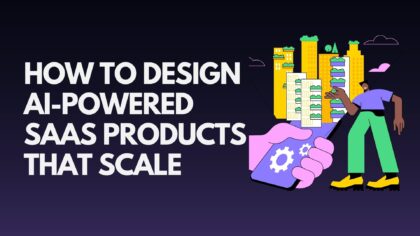Ecommerce Marketing in 2022 Drivers Traffic Through Advertising Channels & More
Ecommerce marketing is the practice of driving top-of-funnel traffic to convert into sales and customers. And there are hundreds of ways to go about it. From focusing on organic traffic and SEO to using Facebook or Google ads to drive targeted traffic, you can mix and match paid strategies with non-paid strategies all in an effort to figure out which mix converts the most people. But no marketing strategy is even static. As marketing tactics and marketplace algorithms evolve, so too must your strategy in order to win the highest return on ad spend – as well as return on operating costs associated with non-paid growth strategies like SEO.
In order to effectively grow an eCommerce business – whether or not you have a retail presence – you need a well-thought-out eCommerce marketing plan to drive brand awareness and increase sales. And there’s no way around it.
Creating and Executing an Ecommerce Marketing Plan
Without a well-thought-out plan of attack, the chances of accomplishing your marketing goals will be slim to none. And without an understanding of the eCommerce marketing landscape, you’re at a severe disadvantage. We’ve applied the foundational elements of crafting a marketing plan, injected some time-savings tips, and applied our backlog of eCommerce-specific advice to ultimately create a plan that is perfect for building your online store.
- Seek Out Mentors & Advice.
Find companies or individuals who have already built and scaled a successful eCommerce business, ideally within the same industry. Then, ask for their advice.
- Hire Experts When Possible.
Quite simply, the breadth of knowledge and experience that a talented marketer can bring to your business can’t be understated. The time and effort you’ll spend learning about digital marketing campaigns can be spent on more meaningful work.
- Target Customers, Personas & Markets
Know your audience. If you don’t have a clear understanding of who you’re targeting, what characteristics define them, and where they’re located — you’re bound to run inefficient campaigns that waste money targeting low-converting, unqualified individuals.
Make sure you know the following:
- Age ranges
- Gender breakdown
- Geographic location
- Purchasing power
- Situation Analysis
You can only know where you’re going if you know where you’ve been. Therefore, perform a thorough assessment of the current state of the company, the competition, and the overall marketing plan. Leave no stone unturned. A better understanding of your current situation will lead to better decision-making, and eventually, better results.
- Pricing & Positioning Strategy.
Ensure your pricing and positioning provides real value to your target audience. Forcing products upon your target customers that they deem to be overpriced is a losing proposition, especially when price comparing is SO easy these days.
- Distribution & Fulfilment Plan
Even if you’re starting small, you should have a clear understanding of the distribution and order fulfillment requirements that will evolve as you grow. Whether you are packing and shipping yourself, overseeing a small team, or leveraging a third-party fulfillment shop, you need to know whether your fulfillment processes can meet the demand of your upcoming marketing push.
Looking for SEO Services
Executing an Ecommerce Marketing Plan
If you’re a small business, this is when you start laying the groundwork for future growth, and if you’re more established, this is how you expedite your growth trajectory.
- Determine Your Sales & Lead Generation Strategy
This is where you get creative. And unfortunately, this is where the one-size-fits-all answers stop. The number of ways in which you can market your business is seemingly endless.
At the top of the funnel, you’ll see the brand awareness-building strategies that don’t often produce immediate conversions — like posting organic social content or programmatic display ads. And at the bottom, you’ll see Google search network advertisements, Instagram retargeting ads, and direct email communication.
It is important to consider the primary purpose of every campaign strategy you employ and where it fits in your funnel.
- Start With Conversions
Within your lead generation and sales funnel strategy, there were certain bottom-of-the-funnel strategies designed to get customers over the finish line. We strongly recommend rolling out those campaigns first to generate sales and positive momentum.
Then, once your team feels comfortable with the initial results, continue to roll out your entire eCommerce marketing strategy (more on these types of strategies below).
- Test The Waters
Allocate part of your eCommerce marketing budget to test new strategies. After all, you’ll never know what works well and what doesn’t until you try it. Depending on the size of your budget, running some simple test cases in smaller markets can provide you with the ammunition you need to justify a budget increase, validate your prior recommendations, and/or open the door to an entirely new market opportunity.
Some strategies to consider are:
- Joint Ventures & Partnerships – Complementary brands have found success through partnerships. You can co-create content that exposes both brands to each other’s email lists. The opportunities are endless, and when the brands align, both brands benefit.
- Increase AOV – You’ve been on a quest to drive sales. Now, try to increase the average order value. Tier your discount codes to incentive larger purchases or offered expedited shipping for orders 50% higher than your current AOV.
- Referrals – Offer current customers the opportunity to refer a friend and reap the rewards. It’s a win-win. They become an army of brand advocates, while at the same time, searching through your product catalog for ways to use their new discount code.
- Refine & Expand Your Ecommerce Marketing Strategy
New marketing channels are opening every day. Huge networks, like Google and Facebook, will continue to offer new ways to reach customers and attract more advertising dollars. With that in mind, here’s a list of the best channels, tactics, and tools to consider when crafting your eCommerce marketing plan.
- Pay-Per-Click advertising (PPC)
Pay-per-Click advertising or PPC can be one of the foundational elements in your eCommerce marketing strategy. Just in case you’re unfamiliar with PPC, your brand would pay an ad network, like Google, every time someone clicks on your advertisement.
There are several types of PPC advertisements that I’d like to call attention to – paid search, display, and shopping campaigns – since they’re most relevant to eCommerce marketing success. Each type of PPC advertising can play an important, yet different role in your overall marketing strategy.
- Search Engine Optimization (SEO).
Over the past 20 years, Search Engine Optimization has evolved for the better. In the past, SEO experts were using dishonest tactics and exploits to boost website rankings. Now, on the other hand, SEO is more about adhering to on-site best practices and earning your ranking, rather than “working the system.”
That being said, SEO is a growth marketing strategy that should NOT be overlooked. In fact, 70-80% of Google users are only focusing on organic search results.
- Content marketing.
Content marketing is a bit of a unicorn in the eCommerce space. When you have a highly-tested and comprehensive content marketing plan, just about every other marketing channel you use becomes more successful in parallel. That’s because content marketing is the best means to distribute your product to an audience.
Through blog posts, infographics, and videos, you reach more customers on their own turf: the internet. It’s called inbound marketing — where shoppers come to you — and it costs significantly less than outbound efforts, where you go out and find the shoppers for yourself.
- Influencer marketing.
As consumers are exposed to more and more advertisements, brands are incorporating different strategies to reach and appeal to customers. Therefore, a brand will align with an “influencer”, somebody who has a large following and credibility within a certain niche.
Through this partnership, both parties will co-create content that’s intended to build awareness and drive sales. And since the influencer already has the attention and trust of their following, these paid product endorsements feel less intrusive than standard advertisements.
- Social media marketing.
Social media is (and will remain) a rapidly evolving landscape of networks and platforms that continually change the way people interact with brands online. As marketers, we are tasked with understanding best practices and implementing strategic campaigns that engage potential customers, create brand advocates and eventually, fuel the bottom line.
Luckily, popular social networks like Facebook, Twitter, and Instagram have been continually rolling out new features and tools to help brands effectively reach their target audience.
- Email marketing.
When crafting a comprehensive eCommerce marketing plan, email can play a very important role. On one hand, it may not receive the attention of newer, trendier avenues for marketing your eCommerce business, but when done right, email can produce a consistently high return on investment.
That being said, don’t expect to “batch and blast” your way to high conversion rates and increased order values. Taking a more strategic, thoughtful approach to email will eventually yield very positive results.
- Affiliate marketing.
Affiliate marketing is the process of an eCommerce merchant paying a commission to an external website for any sales generated from their referral traffic. The sales are tracked via affiliate links, which can be implemented by using various affiliate programs.
One great thing about affiliate marketing for eCommerce merchants is that you only pay after a sale occurs. Merchants also get to choose their own commission rates, with is a percentage of the sale price usually ranging from 5 to 30%. It’s also very ROI positive.
- Local Marketing
Local marketing – also known as “location-based marketing” and “neighbourhood marketing” – is the process of optimizing your website and online advertising to help drive foot traffic and awareness in local regions.
If you’re a brick-and-mortar store or brand that is looking to make a move online, it’s important to not lose the existing in-person customers that you already have. In addition, if you have a storefront or local presence, there are a number of strategies you can use to continue growing that footprint.
Conclusion
Crafting a well-thought-out eCommerce marketing plan may seem daunting. But then again, the wealth of strategies and channels that can help drive online sales is enormous (and continuing to grow). While you may be tempted to go off to the races, intentionality is key when you first begin developing an eCommerce marketing strategy. Make sure you have a deep understanding of your product and the demand for your product and don’t be afraid to make assumptions, so long as you test them.
So, as long as you’re organized and detail-oriented, it’s hard to go wrong. After reading this comprehensive list of strategies, you’ll be well on your way to creating a real impact and getting real revenue.
Content Credits: https://www.bigcommerce.com/blog/ecommerce-marketing/#ecommerce-marketing-channels-tactics-tools-to-consider


